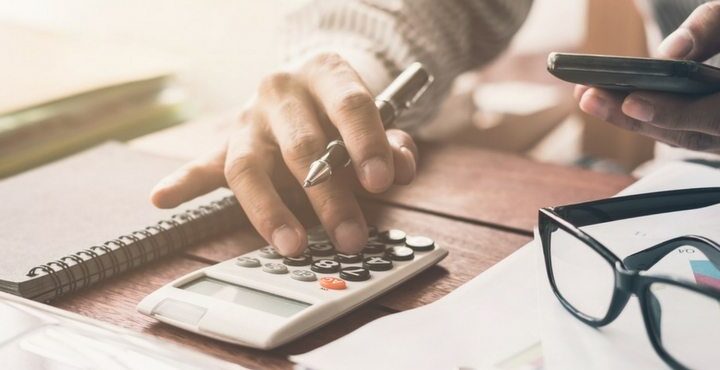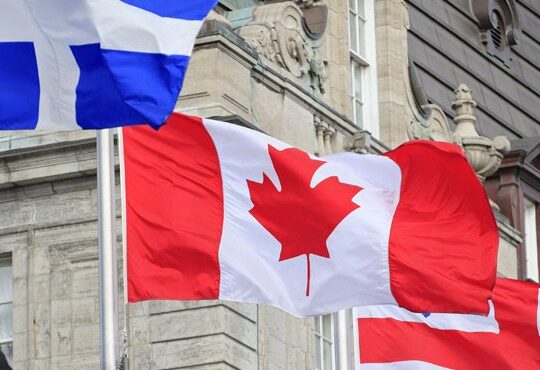Did You Know You Can Claim The GST/HST Rebate On Your Expenses?

Hebatollah El-Kady
December 20, 2020 | 5 Min Read

You may have been required by your employer to pay for your own employment expenses at work. To be able to claim these expenses, your employer must approve them and sign the T2200 Declaration of Condition of Employment. You don’t file the form with your tax return, however, you need to keep it in case CRA asks for a copy.
You are required to file the T777 Statement of Employment Expenses form with your tax return. This form allows you to calculate your eligible expenses, the amount that can be deducted on this year’s tax return, and any amount that can be carried forward to future tax returns. If you deduct the GST/HST you paid on these expenses, you might be eligible to claim a GST/HST rebate.
Eligible Expenses
You must have paid the GST or HST on your expenses and included them on your tax return before you can claim the rebate. For example; GST/HST paid on vehicle maintenance, gas, etc. Not all expenses qualify for the rebate, eligible expenses include:
- expenses you incurred when your employer was a GST/HST registrant
- the work-use part of your eligible expenses
- the GST/HST paid on eligible expenses for food, beverages, and entertainment; 80% for long haul trucker and 50% for all other eligible employees.
- expenses that relate to a taxable allowance you received from your employer that is reported in the GST/HST rebate application. This allowance was included in your income as a taxable benefit (T4)
- an expense or part of an expense for which you were not reimbursed or are entitled to be reimbursed by your employer
- expenses on which you paid GST or HST, such as:
- goods and services acquired from registrants (non-registrants small suppliers do not qualify)
- most expenses you incurred inside Canada (for example, gasoline,
accommodation, meals, and entertainment) - expenses that you pay GST or HST on (basic groceries, insurance premiums, mortgage interest, motor vehicle license fees do not qualify)
- GST/HST paid on the portion of the CCA you claimed on motor vehicles, aircraft, and musical instruments that you did not receive an allowance for.
Completing Your GST/HST Rebate From
You must complete the GST370 Employee and Partner GST/HST Rebate Application form to apply for the rebate:
Part A: Report your identification information and the tax year.
Part B: Calculate your rebate amount based on the employment expenses you claimed on the T777 form and the GST/HST rate of your province. For expenses which you have paid a GST amount, claim a rebate of 5/105 (Alberta, British Columbia, Manitoba, Northwest Territories, Nunavut, Quebec, Saskatchewan, and Yukon). For expenses where you have paid an HST amount claim a rebate of:
- 13/113 (Ontario)
- 14/114 (Prince Edward Island)
- 15/115 (New Brunswick, Newfoundland and Labrador, Nova Scotia, and Prince Edward Island)
Quebec residents claim the 5/105 GST rebate, and the 9.975/109.975 PST/QST rebate. Saskatchewan residents claim the 5/105 GST rebate and the 5/105 PST rebate.
In this section of the form, you need to complete charts 1 and 2 before completing the first page:
- use chart 1 to calculate the eligible portion of your expenses other than CCA (i.e. 50% of food and beverage, utilities, motor vehicle fuel, etc.)
- use chart 2 to calculate the eligible expenses on CCA
- report the eligible expenses other than CCA on line 1 of the first page
- report the eligible CCA expenses on line 2 of the first page
- add both lines and multiply by your province’s GST/HST rebate rate
Part C: Your employer should complete this part if you claim a rebate for expenses that relate to a taxable allowance (Box 40 of the T4 slip). You cannot claim a rebate for expenses for which you received a non-taxable allowance. A non-taxable allowance is an allowance that was considered reasonable at the time it was paid.
Part D: Authorize the claim by certifying the accuracy of the information you provided.
Consideration When Completing the Charts
Eligible expenses:
You must report the total expenses before calculating the eligible portion.
For example;
Donna works as a salaried transport employee in Ontario. She paid in total $1,400 for food and beverages that were approved by her employer. $400 of the amount was incurred in the United States:
- she reports the total of $1,400 in the first column of Chart 1
- she deducts the non-eligible portion and reports it in the second column of chart 2:
non-eligible expenses = $400 (in USA) + $500 (50% of $1,000 inside Canada) = $900
- she reports the eligible portion = $1,400 – $900 = $500 in the third column of Chart 3
- report the $500 eligible expenses on line 3 in column 3B of Part B
- claim the rebate on line 9 = $500 x 13/113 = $57.52
Similarly, if you have a motor vehicle or home-office expenses, you report the full amount, the non-eligible portion (personal use), and the eligible portion (work-use).
Rebate rate:
Each province has its own GST/HST (PST) rate. You apply the rate that you paid on the purchase.
For example;
Joshua paid $800 in lodging expenses (including taxes) when he travelled to Nova Scotia. And he paid $600 (including taxes) in lodging expense when he travelled to Alberta:
- he reports the $800 under the 15% HST column, where he can claim:
$800 x 15/115 = $104.35 in rebate
- he reports the $600 under the 5% HST column where he can claim:
$600 x 5/105 = $28.57 in rebate
Services and Property brought from another province:
You may be eligible to claim a rebate of the difference in HST if you bring the supply or the service from one province to be used in another province. Complete Chart 3 in the following situations:
- you purchased goods in a non-participating province
- you purchased goods in a participating province
- you imported commercial goods from outside Canada
- you had goods delivered or made available to you in a participating province, or sent by mail or courier to you at an address in a participating province from a non-registered non-resident of Canada
If you are not a GST/HST registrant, use form GST489 Return of Self-Assessment of the Provincial part of Harmonized Sales Tax (HST) to calculate the difference in HST paid between two provinces.
For example;
You buy a power tool in Nova Scotia where the HST is 10% to use at your employment place in Ontario where the HST is 8%. The difference in HST between both provinces is 2%. You can claim 2% in chart 3 of the GST370 form or in the GST489 form if you are not a registrant.
GST370 form and your Tax return
Since you can only file one Form GST370 per calendar year, in the event that your claim relates to expenses incurred from more than one employer, you will need to attach a letter to the form from any additional employers certifying the related expense.
The total GST/HST rebate is claimed on line 45700 of your income tax return. The calculation of the GST/HST rebate consists of two parts: rebate on expenses other than CCA, and rebate on CCA expenses. The rebate on expenses other than CCA will be considered income for the year you received it. You will have to report it as income on line 10400 next year. The portion of the rebate on the CCA expenses is used to reduce the UCC of the next year’s CCA calculations.
If you are a Quebec resident, you will need to file the VD-358-V form for Quebec Sales Tax Rebate for Employees and Partnership. The form is very similar to the GST370 form except that it is simpler since you apply for the PST rebate only
TurboTax is the number one selling software in Canada. From do it yourself to do it for me – we have you covered. From the first time filers to tenured individuals, we have every possible tax situation addressed. Here is everything you need to know about our software and our support options.

Hebatollah El-Kady
Related Articles

© 1997-2024 Intuit, Inc. All rights reserved. Intuit, QuickBooks, QB, TurboTax, Profile, and Mint are registered trademarks of Intuit Inc. Terms and conditions, features, support, pricing, and service options subject to change without notice.
Copyright © Intuit Canada ULC, 2024. All rights reserved.
The views expressed on this site are intended to provide generalized financial information designed to educate a broad segment of the public; it does not give personalized tax, investment, legal, or other business and professional advice. Before taking any action, you should always seek the assistance of a professional who knows your particular situation for advice on taxes, your investments, the law, or any other business and professional matters that affect you and/or your business.








